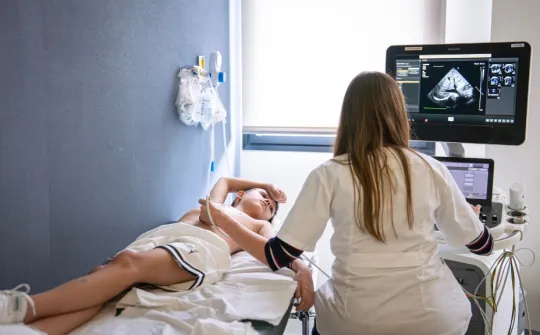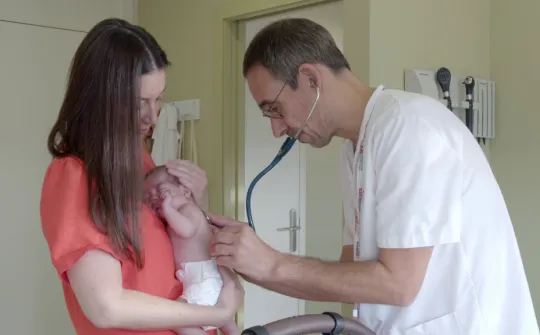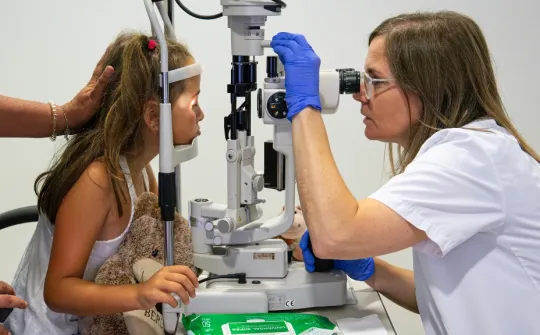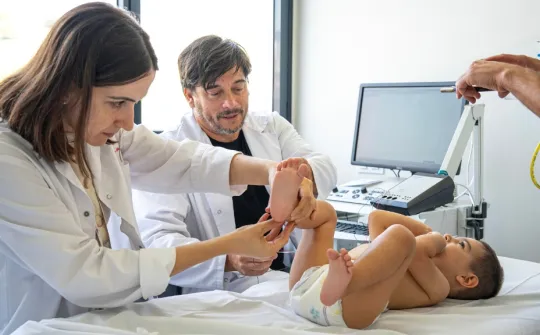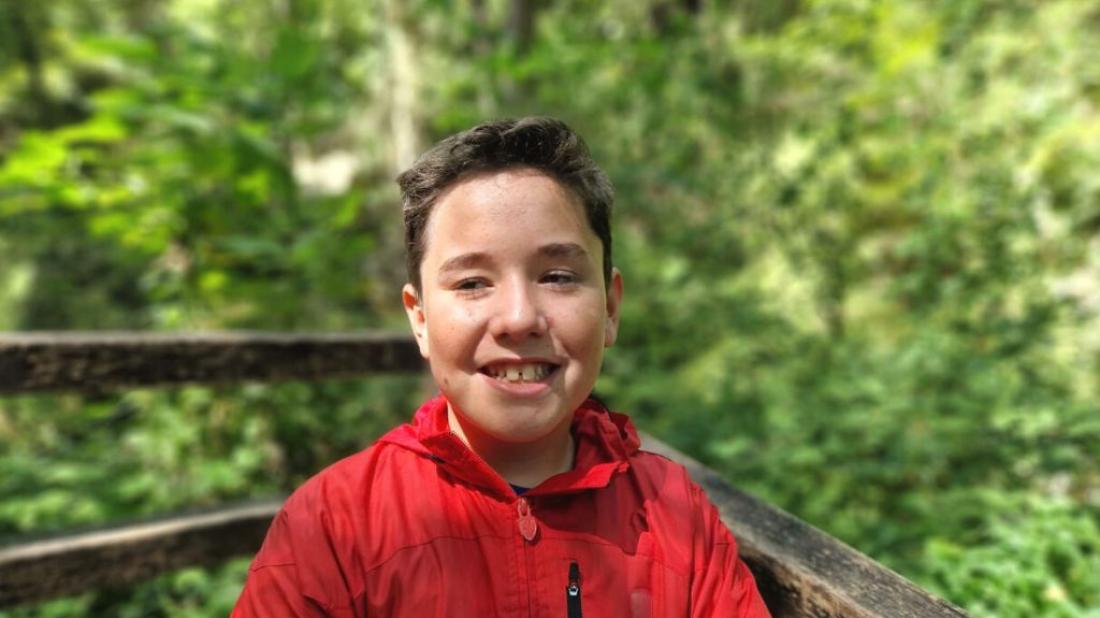
The family of an 11-year-old boy who has had two strokes explains the treatment he received at the SJD Barcelona Children's Hospital that enabled him to overcome the ensuing paralysis.
At the tender age of 11, Kidal has already survived two strokes and was only four when he had his first. ‘It was New Year’s Day 2017,’ his mother, Elizabeth, recalls. ‘We had spent the day at home, eating with family. Kidal complained of a severe headache in the evening and went to bed. Early in the morning, he vomited a lot and the next day, when he woke up, we thought he seemed a little off, but we assumed it was food-related and didn’t give it any more thought.’ ‘A few hours later,’ his father, Alberto, continues, ‘Kidal was still on the sofa, not opening his eyes and not talking.’ At noon, his mother wanted to feed him, but he didn’t want to eat; she wanted to shower him to wake him up, but he became breathless. He was totally unresponsive. In addition, Kidal was also complaining of an unbearable headache, so his brother called A&E.’
The boy, who lives in Montornès del Vallès, was taken to the Granollers Hospital by ambulance where the doctors performed a CAT scan. ‘They told us he had a spot on his brain, a stroke. An hour later, the medical staff decided to urgently transfer him in a mobile ICU to the SJD Barcelona Children's Hospital’ Elizabeth recalls. ‘We knew what strokes were, but in older people. We would never have imagined that our son could have one at the age of four,’ Elizabeth and Alberto both say.
Kidal was admitted to the ICU of the SJD Barcelona Children's Hospital and remained there in an induced coma for 21 days. Seeing that the brain was not reabsorbing the hemorrhage, the doctors decided to intervene. After the operation, he was sedated for several days. ‘It was a period of huge uncertainty. Like everyone, we had heard about the consequences of strokes and knew that many people suffer significant paralysis. But the medical response and the hospital’s technology contributed to his recovery. Our son woke up when they began to slowly take him off the medications. Once the process was finished, we saw that he could not move his right arm or leg,’ his mother explains. ‘I tickled his foot because they had told me that it was a great sign that he had sensitivity and that gave us a lot of faith,’ his father recalls with emotion.
With the help of rehabilitation, Kidal regained mobility in about ten weeks. He started to walk again, first unsteadily and then more confidently. On 5 May 2017, he completed his rehabilitation and speech therapy six months later.
The family could go back to normal. But four years later, history repeated itself. On 16 August 2020, Kidal had another stroke. ‘The doctors had always told us that there was a risk of having another stroke. In the first operation, they only removed part of the clot, but not the congenital malformation of the artery,’ Elizabeth and Alberto explain.
On this occasion, the surgeons performed a second emergency operation and later scheduled another one for 25 November 2020. The results determined that a small spot of the malformation still remained. The doctors then operated on him again for the fourth time on 13 March 2023. He is currently awaiting radiotherapy.
Now 11 years old, Kidal has regular check-ups and leads a normal life. ‘He has been left with a very minor side effect, an attention disorder. If you don’t know what happened to him, you would attribute it to him being somewhat absent-minded,’ his mother explains.
Incidence of stroke in the child population
Every year, the Neurology Department of the SJD Barcelona Children's Hospital receives fifteen children like Kidal who have had strokes. In half of these cases, patients present with a hemorrhagic stroke or brain hemorrhage caused by a ruptured blood vessel. In the other half, they have had an ischemic stroke due to a blockage in an artery that prevents blood flow from reaching the brain.
There are two treatments for ischemic stroke that doctors can use to reverse the effects of the disease if they are administered within the first few hours of the onset of symptoms. At the SJD Barcelona Children's Hospital, they only managed to do this for one young man in 2021 because, in most cases, when the patient arrives at the hospital, they have already been evolving for hours.
This is why pediatric neurologist Verónica González Álvarez emphasizes that it is ‘extremely important that families consult a doctor as soon as they notice that their child has paralysis or altered movement, vision or speech. These symptoms can be due to other more minor ailments, but they can also be indicators of a stroke. Acting as soon as possible is key.’
